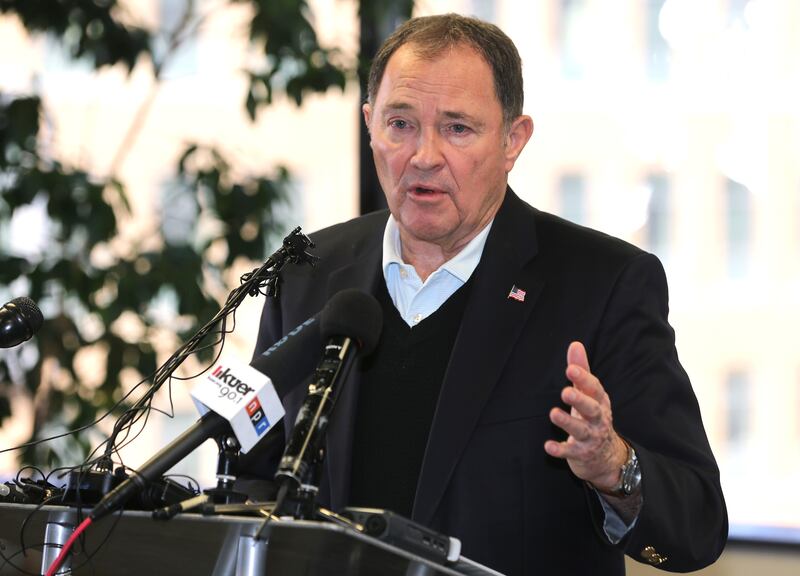It may be difficult to remember, but only a few weeks ago Utah had one of the hottest economies in the nation. The state’s biggest problem was that it had more jobs than it had workers to fill them.
The good news is this gave the state a running start into the economic slowdown being caused by both the spread of the COVID-19 virus and, unique to northern Utah, the magnitude 5.7 earthquake that struck on Wednesday. Jon Pierpont, executive director of the state Department of Workforce Services, said Thursday his office knows of 31,000 available jobs, and he encouraged business leaders to let him know of even more openings so that people laid off or otherwise displaced by hard times can know of their options.
Pierpont was one of several presenters Thursday in an internet meeting of the Utah Economic Response Task Force, established recently by Gov. Gary Herbert to meet current challenges. His wasn’t the only note of optimism sounded during the virtual presentation, which attracted about 1,000 viewers.
For many, this is a gloomy time. Utah’s twin disasters — the intrusion of a global pandemic and an earthquake — are taking a toll financially and psychologically. The best way to counter gloom is with solid information and a realization that leaders of industry, government and health care are aware and working hard on solutions.
In that sense, the task force’s meeting was a ray of sunshine. Its membership includes leaders in all those sectors.
The ability to size up a problem and discuss solutions brings a sense of power. As Gov. Herbert said at the beginning of the meeting, the key is to adapt, innovate and overcome.
Which is not to say the road ahead will be easy. Utah, like every other state, faces huge challenges, both economically and concerning the health of its residents.
Among the problems identified in the meeting is the lack of testing kits available for COVID-19. Rep. Ben McAdams, D-Utah, one of two members of Congress to test positive so far, spoke from the isolation of his home about how he could not be tested until his symptoms reached a severe stage. Too many Utahns with symptoms are being turned away because tests are scarce. Lt. Gov. Spencer Cox said Utah currently tests about 300 people a day. Ideally, it should be testing many thousands.
The need for testing goes beyond letting individuals know their health status. Widespread testing would allow politicians and health workers to know where the virus is most active. This would allow them to chart the spread and plot strategies through focused and concentrated countermeasures. With better testing, perhaps only the people in affected areas would need to practice social distancing.
Widespread testing may be available soon. To a large degree, that problem is out of the state’s hands. In the meantime, business leaders offered much in the way of encouragement both for how to interact with customers, using proper precautions, and how to help employees remain mentally healthy as they work from home day after day.
Clark Ivory, the head of Ivory Homes, tells his workers to maintain familiar routines at home. If they wear a tie in the office, they should do so while working at home, even as they wake up at normal times and maintain exercise routines. Communications with employees, meanwhile, should neither be too optimistic nor pessimistic, but rather realistic. People need to understand the situation at hand so they can plan accordingly.
This task force has been operational only since Monday, yet its goals — to isolate and curate information, to make policy recommendations to state and federal leaders, and to communicate, both among leaders and to residents of the state — already are working to ease some of the gloom.
With well-researched information, people can devise effective solutions.
With well-researched information, people can devise effective solutions. Perhaps the hoarding of certain supplies at grocery stores would cease if people knew supplies were plentiful. Leaders also can plan more effective government responses that address real problems.
The current situation is temporary. That may be difficult to grasp given the daily dose of bad news and the way society seems to be shutting down.
But the cooperation among business, government and health care leaders this task force facilitates offers the best chance for effective solutions and a quick recovery in Utah.

